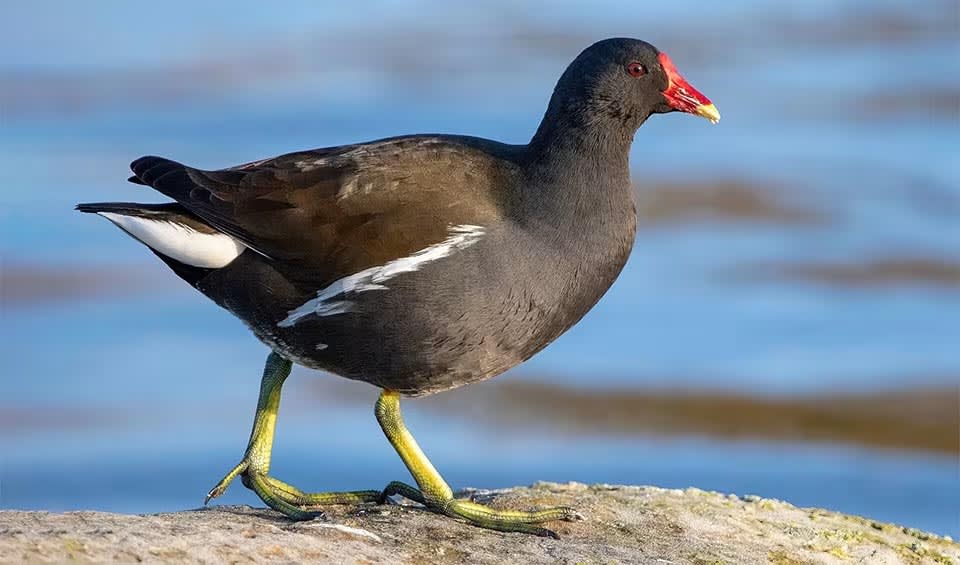Gallinula – Moorhens
Gallinula means “little hen” in Latin, and birds in this genus are also known as marsh hens
Moorhens are medium-sized waterbirds that are a part of the rail family and share many characteristics with their relatives, the coots. However, moorhens have distinct features and behaviors that set them apart as a unique subgroup within this family.
One of the most notable adaptations of moorhens is their legs and feet. They have short legs with long, slender toes that are not fully webbed, allowing them to navigate the uneven and often muddy terrain of their marshy habitats. The elongated toes distribute their weight more effectively, preventing them from sinking into soft soils and enabling them to walk across floating vegetation easily. During aggressive interactions, such as territorial disputes, moorhens may splash water vigorously to show strength or deter rivals.
Moorhens strongly favor wetlands, including marshes, ponds, and riversides. These habitats provide the dense vegetation cover they prefer for nesting and abundant food resources. Moorhens are omnivorous, feeding on a variety of plant material, insects, and small aquatic organisms, which they peck and forage from the water’s surface or the surrounding areas.
Despite their proficiency in running and swimming, moorhens are not renowned for their flying abilities. Many species within this genus can only have short, labored flights, often appearing clumsy and preferring to flee on foot or by swimming when threatened. Their flight is typically low and fast, primarily used to escape predators or move quickly between patches of cover.
The evolutionary trend towards flightlessness in some rail species, including certain moorhens, is a phenomenon that has intrigued scientists. This loss of flight is often associated with island species, where the absence of predators and the need to navigate dense vegetation have favored birds that are more adept at walking and swimming. These flightless moorhens exhibit significant morphological differences compared to their flight-capable counterparts, such as smaller sternums and reduced pectoral muscles, which are unnecessary for powerful wingbeats.
Species in this genus
Common moorhen
Living around smelly brackish marshes is unthinkable, but these birds love their isolated habitat or don’t have a sense of smell


